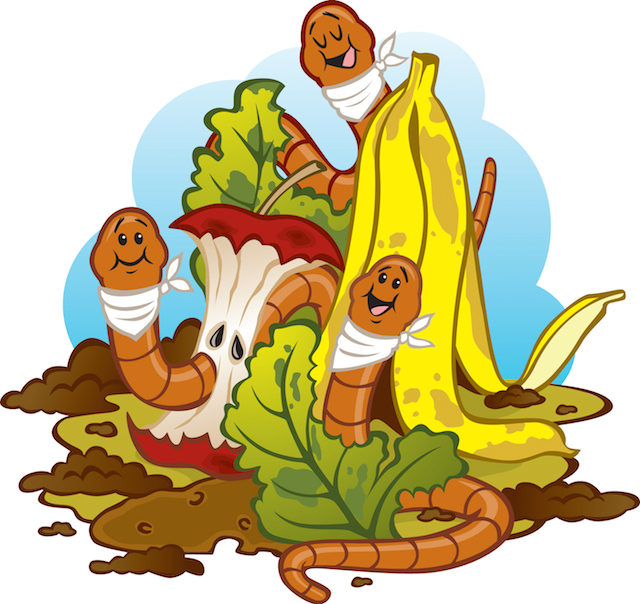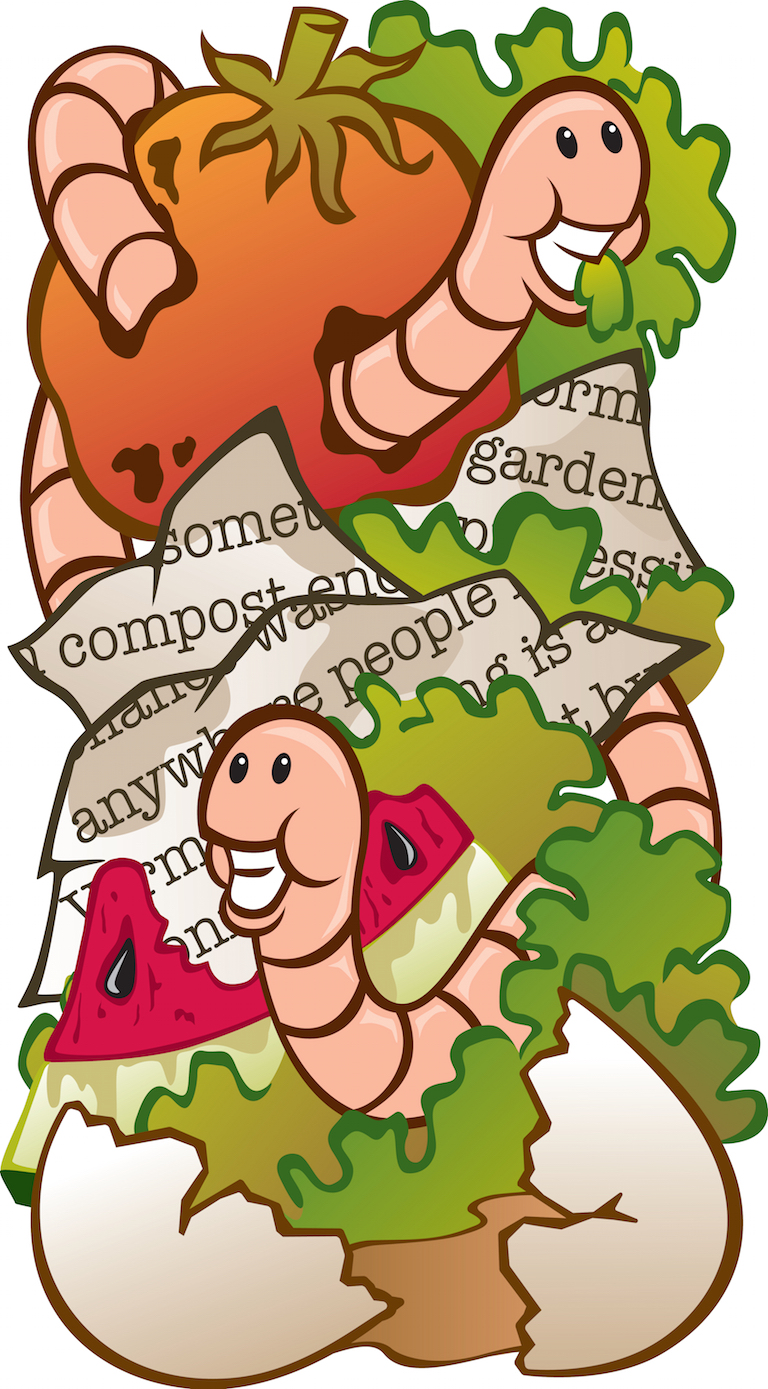
Written by Dan Corbin
Why I like worms
They destroy plant diseases. They break down toxins. They plough the waste of the world. They transform forests. They’ve survived two mass extinctions, including the one that wiped out the dinosaur.
Not bad for a creature that is deaf, blind, and spineless. Who knew that red wigglers were one of our planet’s most important caretakers? Or that Charles Darwin devoted his last years to studying this remarkable achievements?
Worm composting is the fastest and easiest way to recycle household food waste. It takes some planning and periodic involvement to sort out the usable compost. But the rewards are plenty!
What is worm composting?
Worm composting is an easy, efficient way to recycle food wastes into a fine, high-quality compost (worm castings) for your houseplants or garden. It’s very popular with children, teachers in grade schools, and anyone who wants the option of a year-round, indoor/outdoor system that requires very little space or effort.
Worm compost is made in a container filled with moistened bedding and redworms. The bedding may consist of moistened shredded newspaper and leaves. Added to that is food waste from the household.
Vermicomposting is a natural method for recycling nutrient-rich food scraps without any resulting odor. The worms go crazy over such an ideal living habitat, both eating and reproducing plentifully. The resulting compost, called worm castings, is an excellent soil conditioner for house plants, patio containers and gardens.
Worms in bin worm composting reduces the amount of household garbage that goes to the landfill. The bins are entirely rodent-proof. If done properly, whether indoors or outdoors, there will be little or no fruit flies, gnats or odor. Caution should be given to capturing a liquid by-product or leachate, called compost tea, beneath the bin if housed inside. You can ruin a good floor if you don’t!
What you need to get started
Worm composting is simple and inexpensive. All you need are four basic things:
1. Worm bin container
Purchase a commercially made worm bin, mostly made from plastic. Or, create your own from a plastic storage container easily found at most stores.
You may also build one out of wood, or create a worm compost bin out of bricks in your garden.
2. Bedding
The ideal bedding for worms, believe it or not, is shredded wet newspaper, leaves and moist cardboard. Actually, worms are “night owls” and they don’t mind reading the news in small bits! They are the only creatures known to live, eat and poop in their own bed.
3. Moisture
A killer for worms is to not have a moist environment. Don’t give them moisture and they’re out of there! Or else, they will shrivel and die, looking like contorted pretzel sticks.
Give them too much moisture, however, and they will slow down production. Who wants to live in a dark squishy home?
4. Worms
Obviously, you cannot vermicompost without worms, duh!
Redworms (also known as red wiggler, brandling or manure worms) are best suited to worm composting because they thrive on organic material, such as food waste. They are often found in aged manure, compost heaps, and piles of leaves. Their official names are Eisenia foetida and Lumbricus rubellus. Dew-worms (you know, the suicidal kind seen on streets or sidewalks after a rainfall), on the other hand, are better suited to life in the soil and shouldn’t be used in a worm bin. By the way, about 500-2,000 redworms will do to get your worm bin going in high production.
Bonus:
Listen to the latest Green Divas in the Garden episode:
And here’s the latest episode of The Green Divas Radio Show for more on green and healthy living…
Listen to the latest Green Divas Radio Show—and other green and healthy living podcasts—daily on GDGDRadio.com (or get the GDGD Radio app)! Green, free, radio!
[dynamic-sidebar id=’Custom Widget 2′]
 Dan Corbin is the owner of Wisconsin Redworms, a worm farm dedicated to the uses of the hard-working redworm located in southwestern Wisconsin. As a small biology and recycling project, Wisconsin Redworms began in Dan Corbin’s basement.
Dan Corbin is the owner of Wisconsin Redworms, a worm farm dedicated to the uses of the hard-working redworm located in southwestern Wisconsin. As a small biology and recycling project, Wisconsin Redworms began in Dan Corbin’s basement.
As the demand for worms moved from local bait shops to orders throughout the United States, it began to grow into something bigger than one person’s retirement project. The small project was moved to a nearby farm with more room and additional sources of food. The new space provides room for additional worms and space for packing and shipping. Visit his website and Google+ page for more information!
Asst. Ed. Green Diva Grace/Images Via Shutterstock